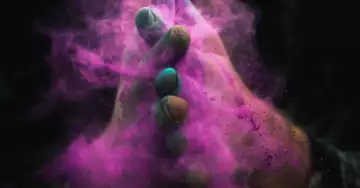Welcome to this week's guest author, CoinDesk reporter Eli Tan, who is filling in for Sam Kessler. Follow him @elitanjourno.
As the Ethereum network approaches "merge" and moves from a proof-of-work (PoW) system to a proof-of-stake (PoS) system, developers are using a new testing infrastructure to evaluate network mechanics and customer readiness.
The first major test, known as "Shadow Fork," took place in April - we covered the event in detail in a previous issue of the newsletter, but the gist is that the test went well and has been repeated twice since.
This article originally appeared in Valid Points, CoinDesk's weekly newsletter that analyzes Ethereum's development and its impact on crypto markets. Subscribe to receive it in your inbox every Wednesday.
This type of testing is crucial to the network's evolution, as it allows developers to find bugs in the code that might otherwise be overlooked when using the devnet.
For example, in the Shadow Fork on April 11, developers discovered a bug related to miners artificially increasing their gas limits.
The second Shadow Fork on April 23 was even more promising, as all client combinations on the network survived the transition and were synchronized for the first time.
The most recent Shadow Fork took place on May 5 and included new tests of synchronization through the merge, which revealed some small but fixable points of improvement.
Like many aspects of the Ethereum network, the merge tests are a collaborative effort, and an extremely important one. Developers are encouraged to record their test results in a shared leaderboard.
Staging the merge
Hive tests
Another form of merge testing is the use of Hive testing. Hive is the integration testing platform for the Execution Layer (EL) of the current Ethereum network and is used to test the new engine APIs.
Like the network itself, Hive tests are constantly evolving. Recently, the testing teams added the ability for Hive tests to mimic the new Ethereum Consensus Layer (CL) proof-of-stake behavior. This new integration makes it possible to run a simulator for the transition from PoW to PoS and see how both the CL and EL will behave.
In a May 4 merge testing update, it was announced that Kurtosis has been added to Ethereum's testing infrastructure.
Kurtosis
The main function of Kurtosis is to set up staging networks, which are test environments that isolate certain aspects of the merge.
According to the developers, these staging environments allow monitoring of various network health metrics during stress tests under simulated harsher network conditions.
Pulse Check
The following is an overview of network activity on the Ethereum Beacon Chain over the past week. For more information on the metrics presented in this section, see our 101 Explanations of Eth 2.0 Metrics.
Disclaimer: All profits from CoinDesk's Eth 2.0 staking venture will be donated to a charity of the company's choice once transfers are possible on the network.
Validated Stakes
The algorithmic stablecoin UST has lost its $1 peg for the second time in three days.
- WHY IT MATTERS: Since May 9, UST fell as low as $0.65, while its sister token LUNA fell as low as $24.85, according to data from CoinGecko. The Luna Foundation Guard has emptied its $1.5 billion Bitcoin (BTC) reserve and purchased another $850 million in BTC to defend UST's bond. After LFG deployed additional bitcoin, UST has since rebounded to $0.90. Treasury Secretary Janet Yellen pointed out the ongoing plight of the stablecoin before a U.S. Senate committee on May 10.
The total value locked up in decentralized financial protocols (DeFi) reached a 2022 low of $160.74 billion on May 10.
- WHY IT MATTERS: According to data from DeFiLlama, $44.43 billion in locked value has been lost since May 5. Stablecoin swap platform Curve, the largest DeFi protocol after TVL, saw a 16% drop last week. Lido, the leading liquid wagering solution, saw a decline of about 29%. TVL for Terra's Anchor slipped 57%. Tokens in the broader DeFi sector lost an average of 34%; in comparison, the meme coin sector lost only 16%.
Compound Treasury received a B- credit rating from S&P Global Ratings, making it the first institutional DeFi offering to be rated by a credit rating agency.
- WHY IT MATTERS: S&P indicated that uncertain stablecoin regulations, risks associated with converting stablecoins to fiat currency, and Compound Treasury's limited capital base were some factors contributing to the assigned rating. With a B- grade, the USDC-powered yield platform is classified as "speculative" but "currently has the ability to meet financial obligations."
Instagram is testing non-fungible token (NFT) integrations.
- WHY IT'S IMPORTANT: With over one billion monthly active users, Instagram will initially support Ethereum-based NFTs, with integrations on Polygon, Solana and Flow to be added at a later date. Instagram parent Meta (FB) is working on three-dimensional augmented reality NFTs (non-fungible tokens) with its Spark AR software, which will initially be compatible with Instagram Stories. While Instagram will not charge users for posting and sharing NFTs, it hopes to turn NFTs into a revenue stream for creators.
The UK is looking to introduce legislation to regulate the crypto industry.
- WHY IT MATTERS: The Economic Crime and Corporate Transparency Bill will "create powers to make it quicker and easier to seize and recover crypto assets, which are the main medium for ransomware. The goal is to "mitigate the risk posed by those who cannot be prosecuted but use their funds to further crime."

